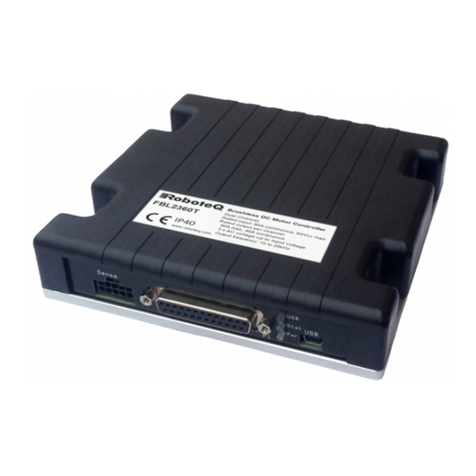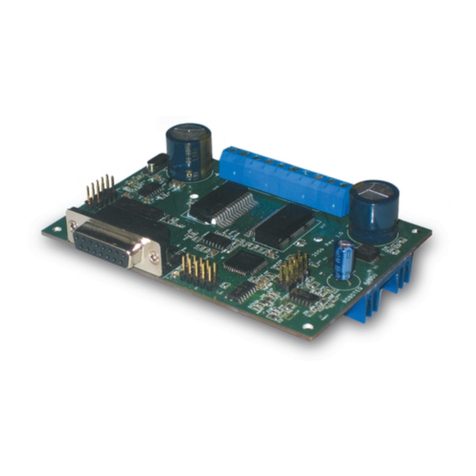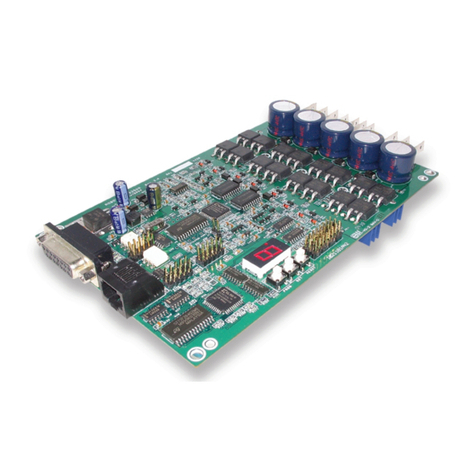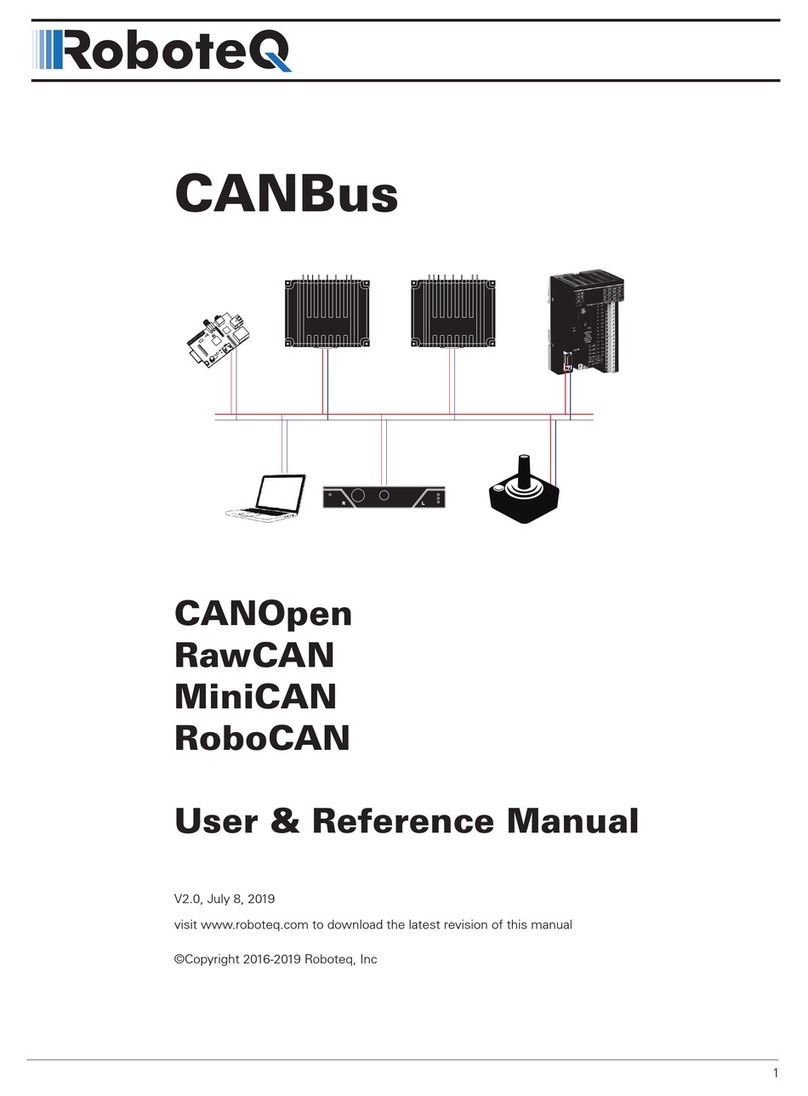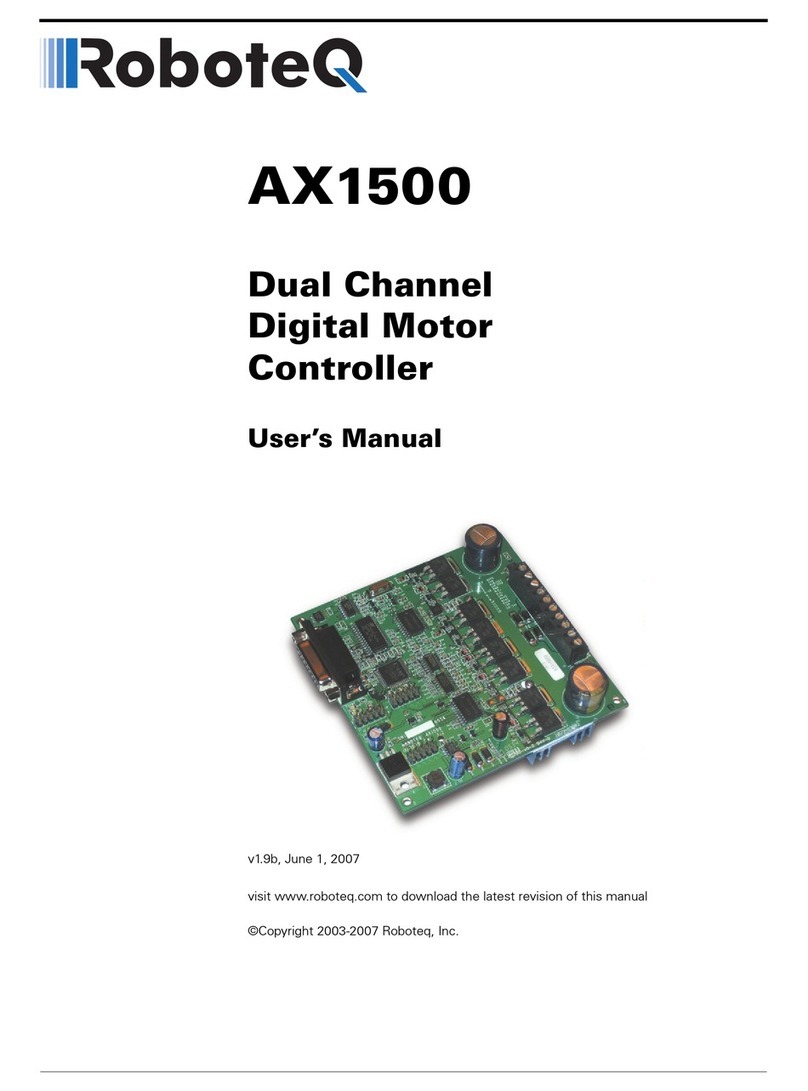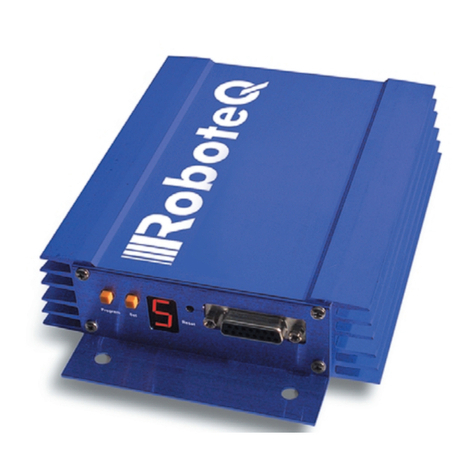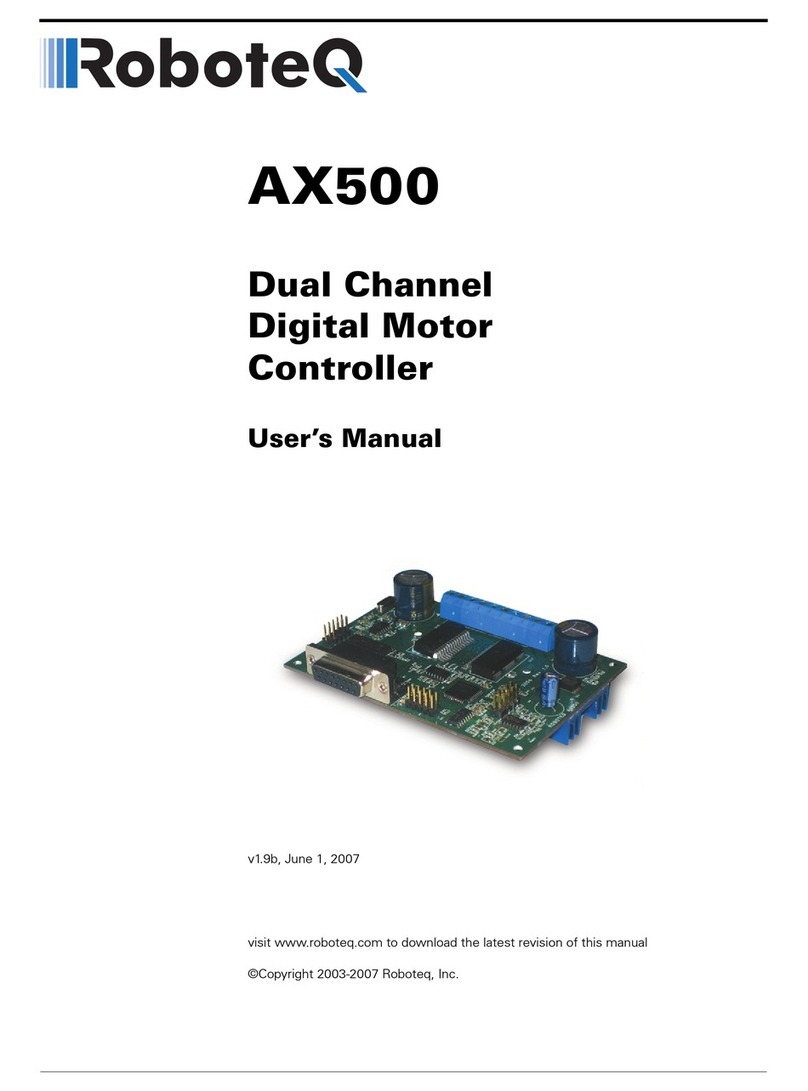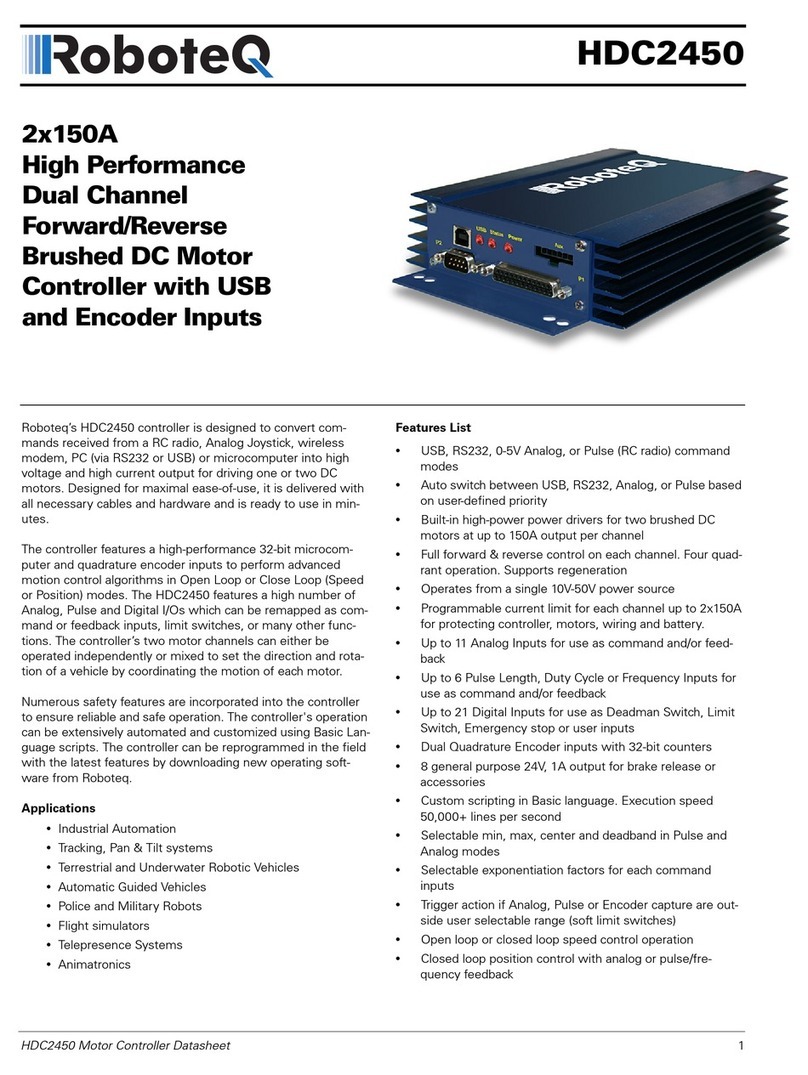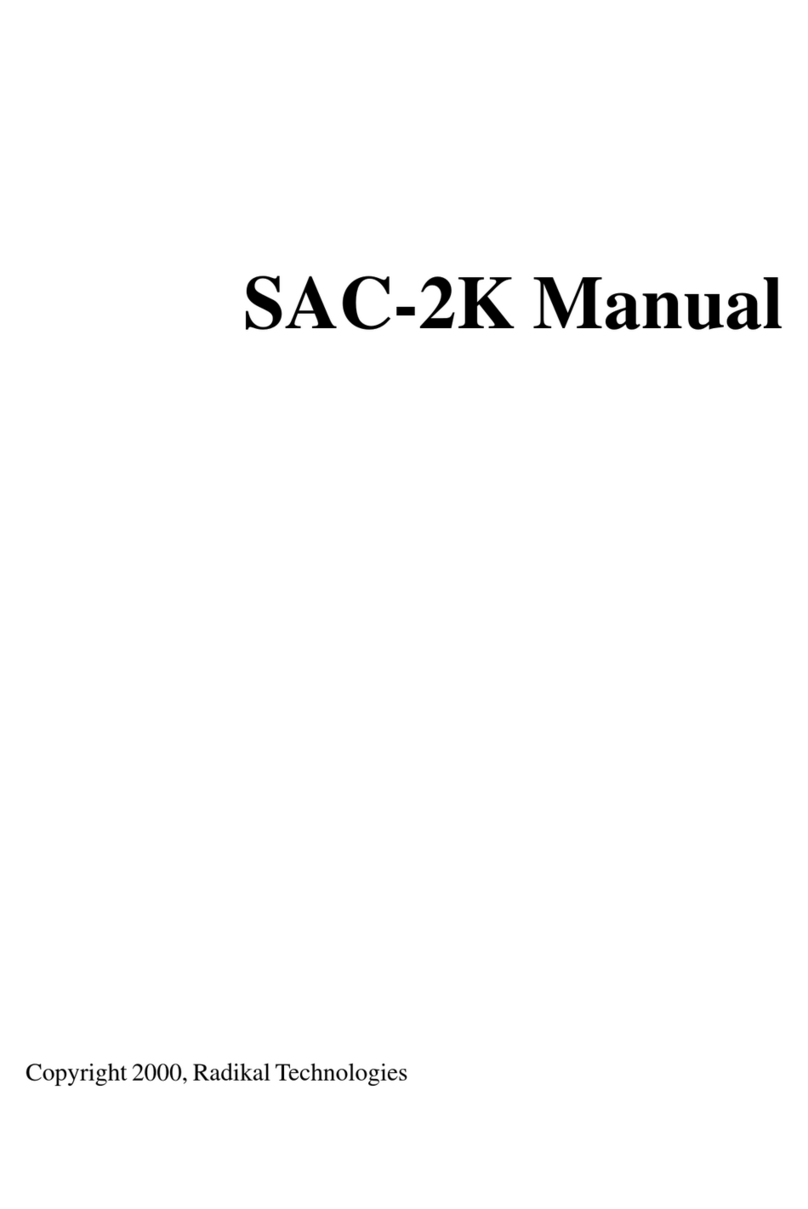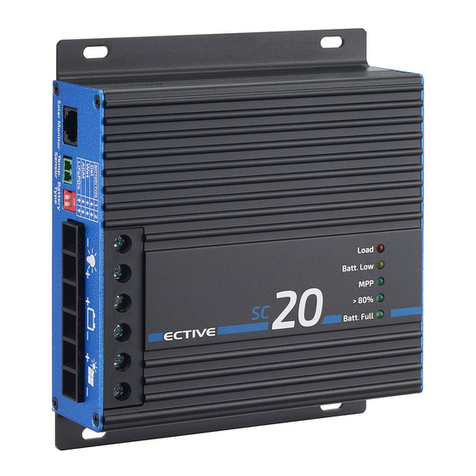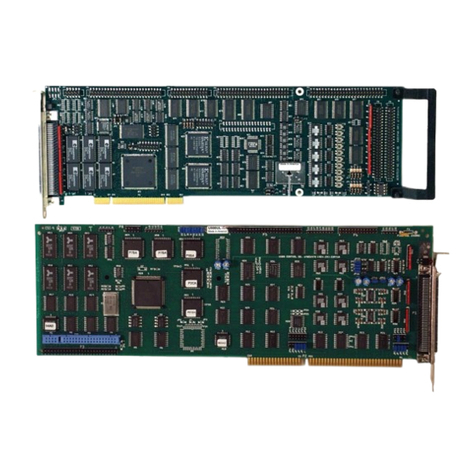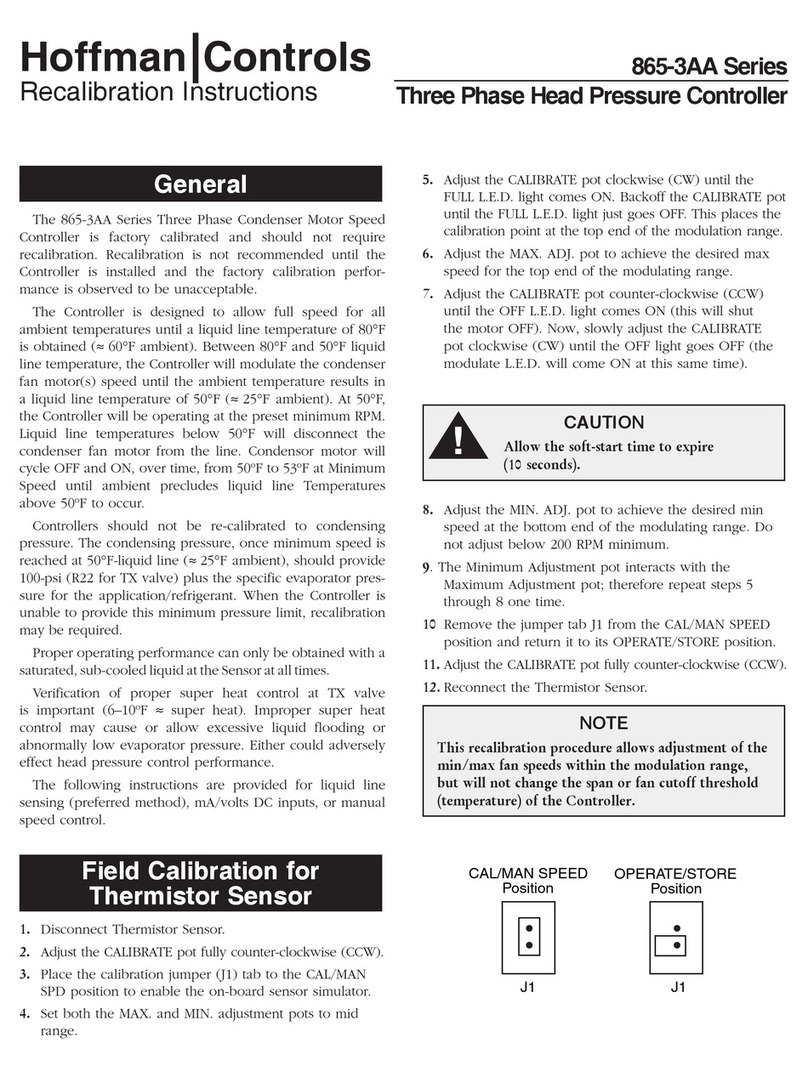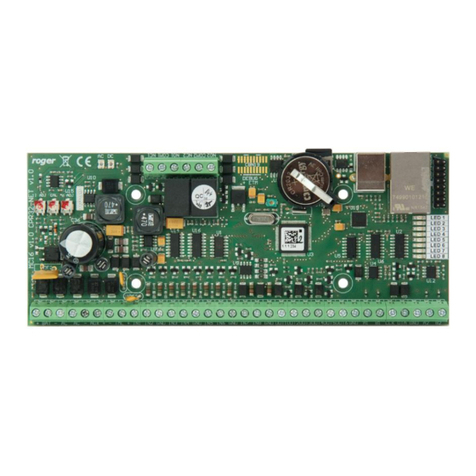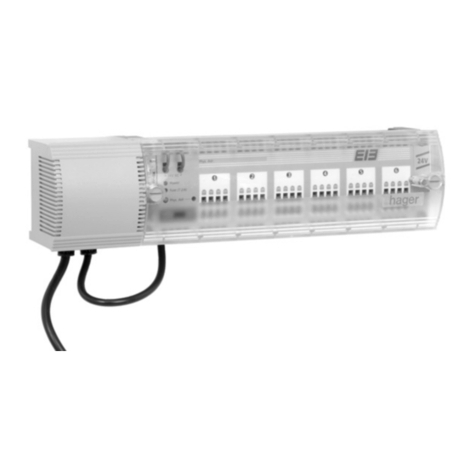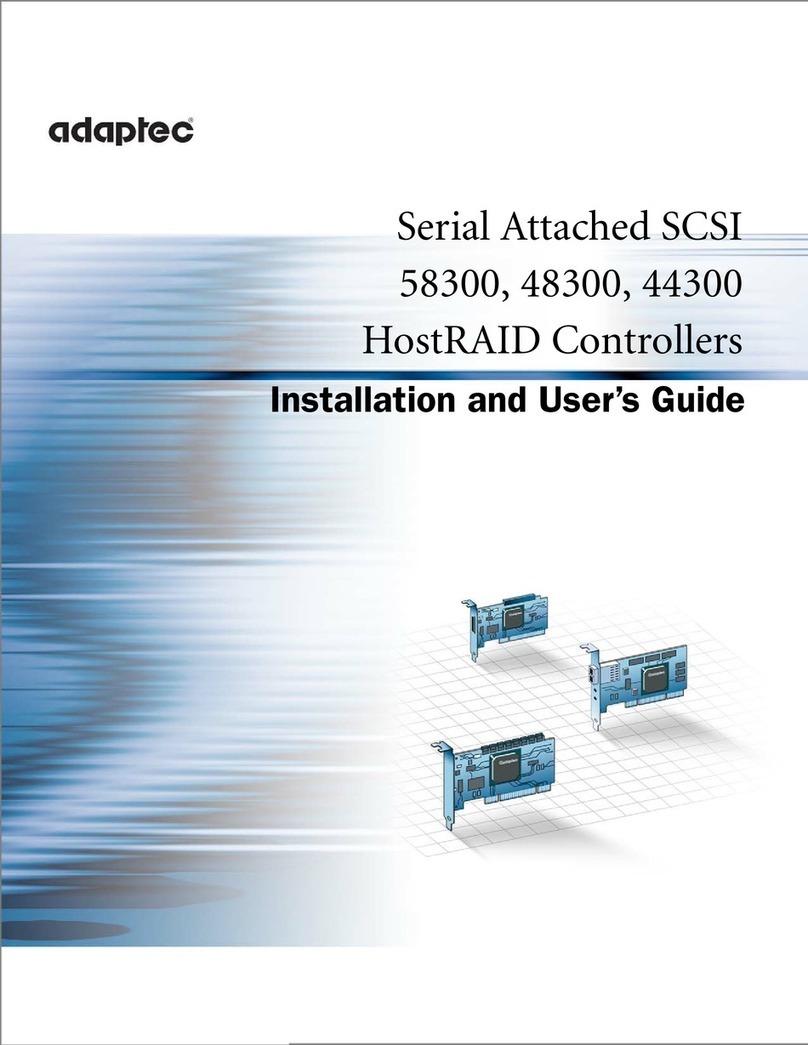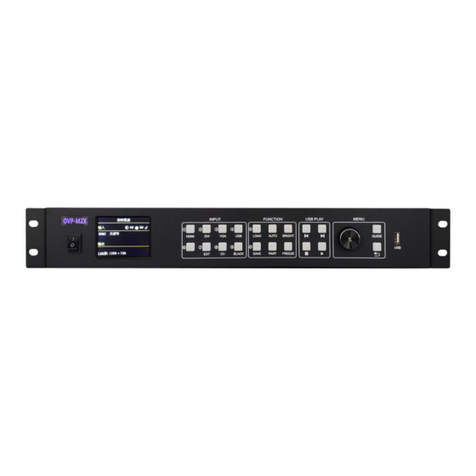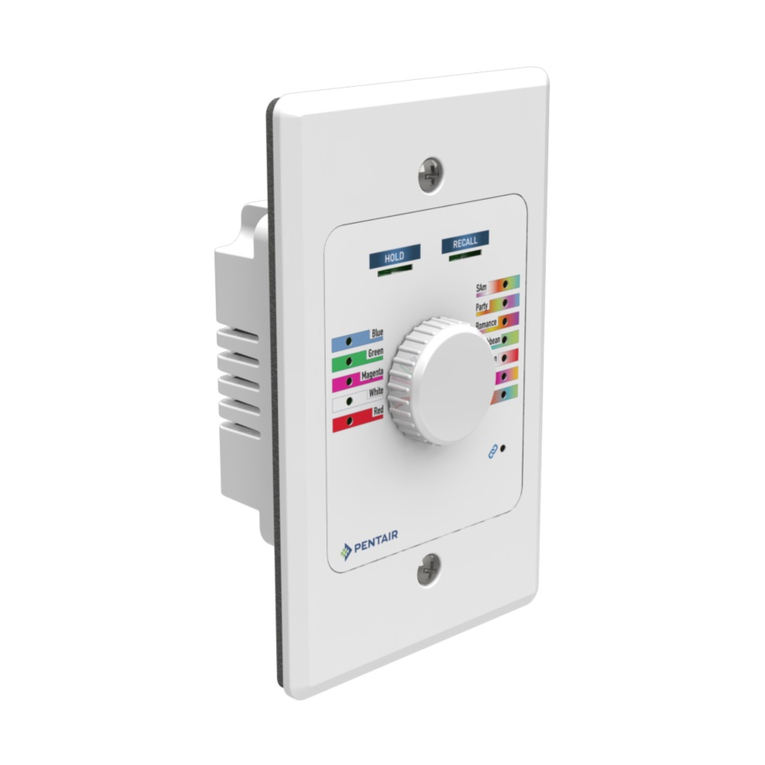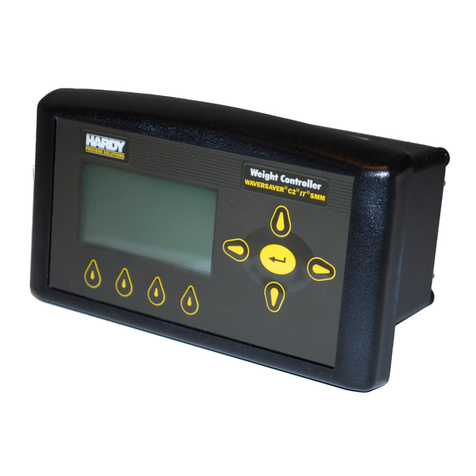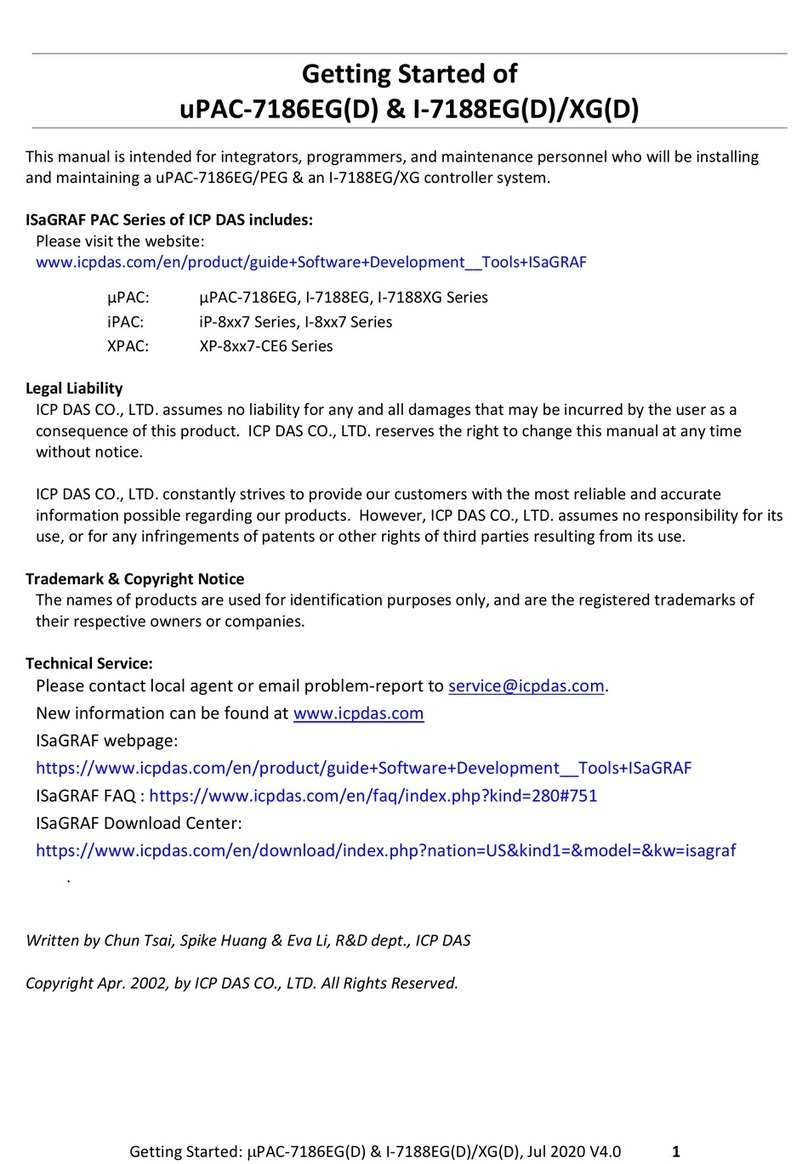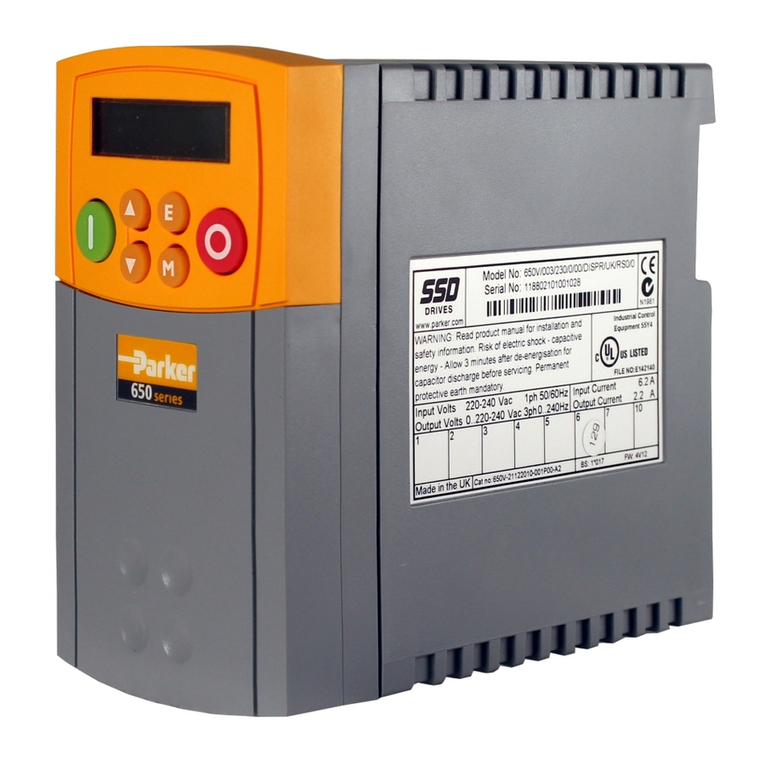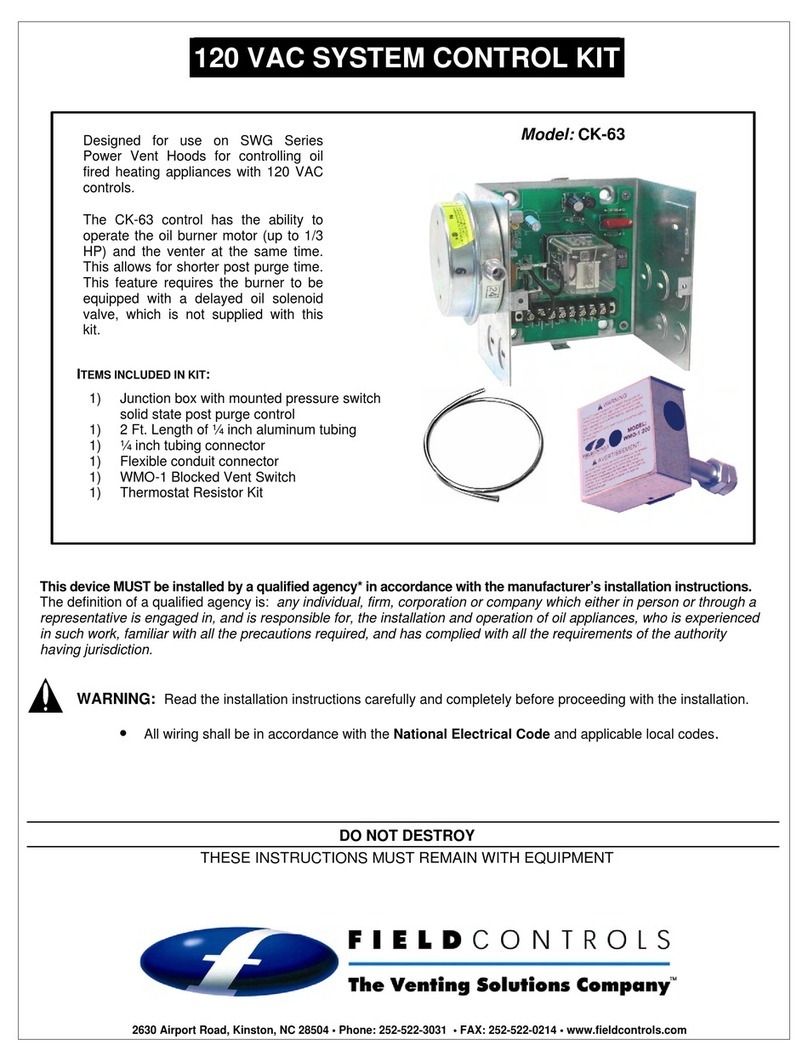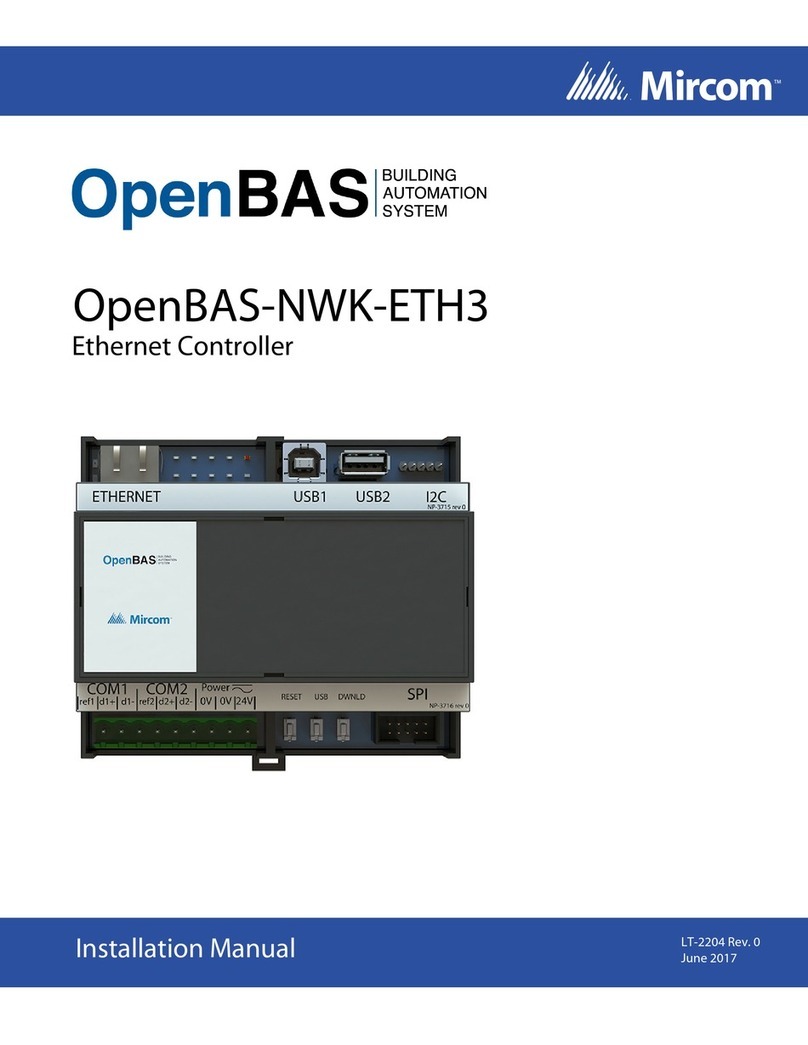
MDC1230/MDC1460 Motor Controller Datasheet 1
MDC1230/MDC1460
Roboteq’s MDC1230 and MDC1460 controllers are designed
to convert commands received from an RC radio, Analog
Joystick, wireless modem, PC (via RS232) or microcomputer
into high voltage and high current output for driving one
DC motor. Using CAN bus, up to 127 controllers can be
networked on a single twisted pair. Numerous safety features
are incorporated into the controller to ensure reliable and safe
operation.
The controller features a high-performance 32-bit microcom-
puter and quadrature encoder inputs to perform advanced
motion control algorithms in Open Loop or Close Loop (Speed
or Position) modes. The MDC1xxx features several Analog,
Pulse and Digital I/Os which can be remapped as command or
feedback inputs, limit switches, or many other functions.
Numerous safety features are incorporated into the controller
to ensure reliable and safe operation. The controller’s operation
can be extensively automated and customized using Basic
Language scripts. The controller can be reprogrammed in the
field with the latest features by downloading new operating
software from Roboteq.
Applications
• Industrial Automation
• Fan and Pump control
• Winch and Cranes
• Personal transportation
• Automatic Guided Vehicles
• Terrestrial and Underwater Robotic Vehicles
• Automated machines
• Telepresence Systems
• Animatronics
Features List
• RS232, 0-5V Analog, or Pulse (RC radio) command modes
• Auto switch between RS232, Analog, or Pulse based on
user-defined priority
• CAN bus interface at up to 1Mbit/s
• Built-in high-power power drivers for one DC motor at up
to 80A (MDC1230) and 120A (MDC1460)
• Support for 10 KOhm NTC temperature sensors through
analog inputs (requires an external 10 KOhm pull-up
resistor)
• Full forward and reverse control. Four quadrant operation.
Supports regeneration
• Operates from a single power source
• Built-in programming language for automation and
customization
• Programmable current limit up to 80A (MDC1230) or 120A
(MDC1460) for protecting controller, motors, wiring and
battery
• Up to six Analog Inputs for use as command and/or feed-
back
• Up to six Pulse Length, Duty Cycle or Frequency Inputs
for use as command and/or feedback
• Up to six Digital Inputs for use as Deadman Switch, Limit
Switch, Emergency stop or user inputs
• Quadrature Encoder input with 32-bit counter
• Two general purpose 24V, 1A output for brake release or
accessories
• Selectable min/max, center and deadband in Pulse and
Analog modes
• Selectable exponentiation factors for each command
inputs
• Trigger action if Analog, Pulse or Encoder capture are out-
side user selectable range (soft limit switches)
• Open loop or closed loop speed control operation
• Closed loop position control with analog or pulse/fre-
quency feedback
1x80A and
1x120A
Single Channel
Brushed DC Motor
Controller with
Encoder Input,
USB and CAN












